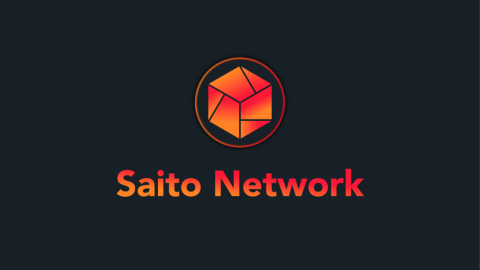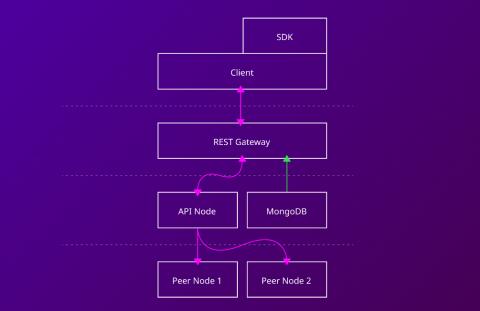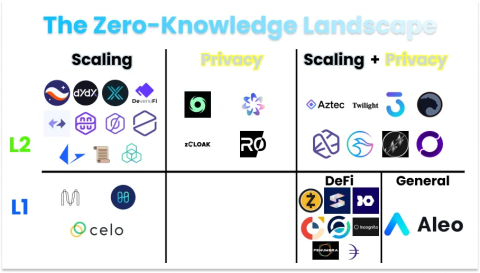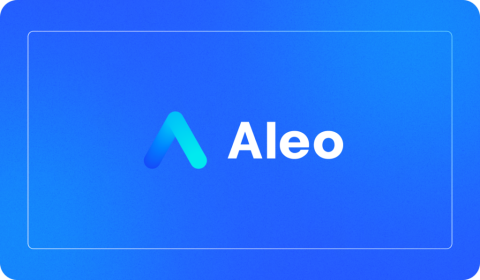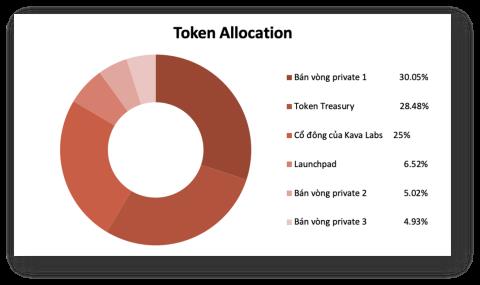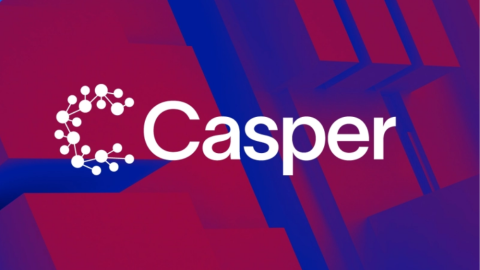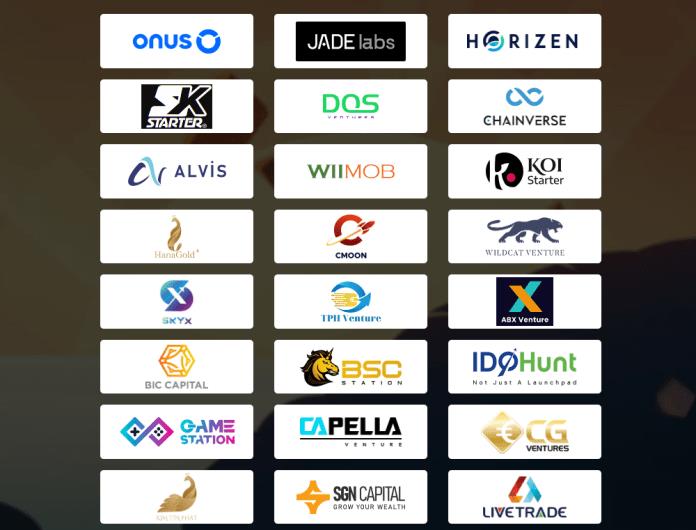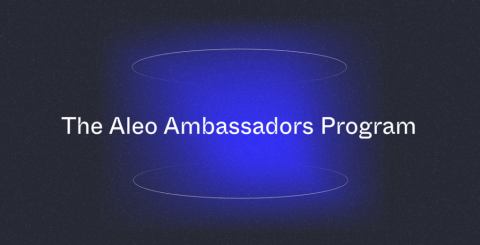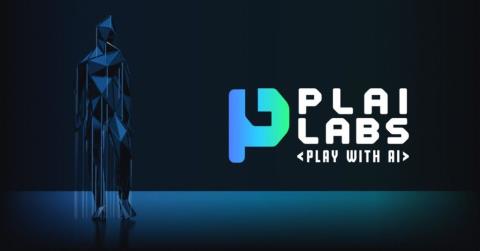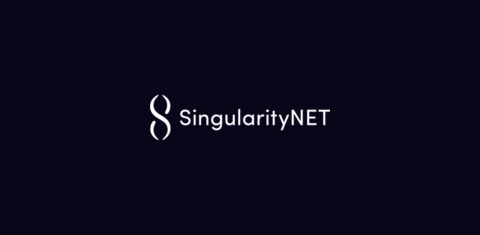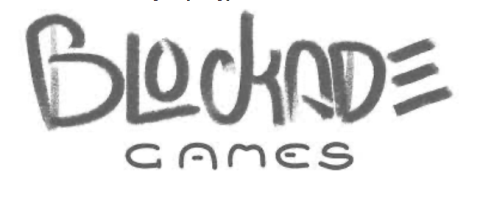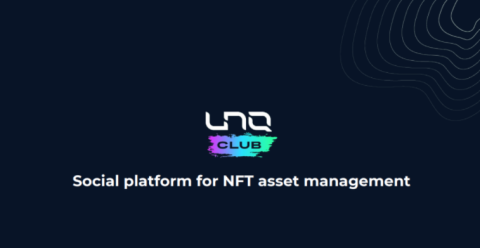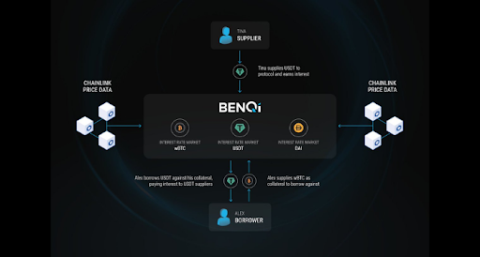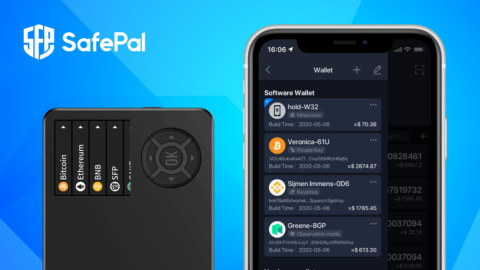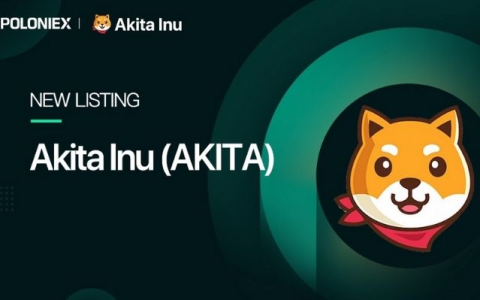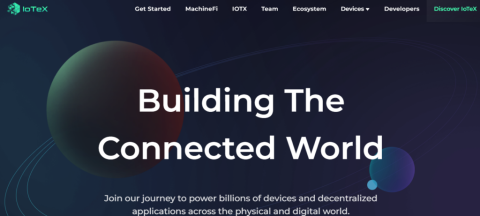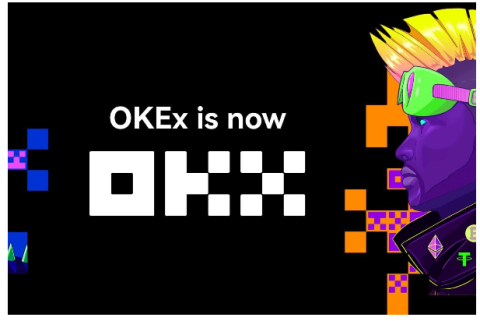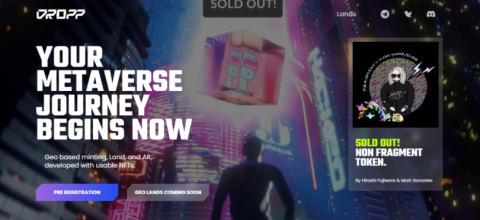What is Efinity? Basic information about Efinity (EFI) that you cannot ignore
Efinity is considered to be the foundation for businesses and developers to deliver a modern, authentic and user-friendly NFT experience.
Disadvantages of Bitcoin and Ethereum
Cosmos ' vision is to make it easy for developers to build Blockchains and break down the barriers between Blockchains by allowing them to transact with each other. The ultimate goal is to create a Blockchain network that can communicate with each other in a decentralized manner. With Cosmos, Blockchains can maintain sovereignty, process transactions quickly, and communicate with other Blockchains in the ecosystem. Thereby making it optimal, suitable for many different use cases.
This vision is achieved through an open source toolkit such as Tendermint, Cosmos SDK and IBC. They are designed to allow anyone to build custom, secure, scalable and interoperable Blockchain applications quickly. Let's take a closer look at some of the most important tools in the Cosmos network's ecosystem and technical architecture. Note that Cosmos is an open source community project originally built by the Tendermint team. Everyone is encouraged to build additional tools to enrich the ecosystem.
Cosmos layers. Source: cosmos.network
Until recently, building a Blockchain required building all three layers (network, consensus protocol, and application) from scratch. Ethereum has simplified the development of decentralized applications by providing a virtual machine blockchain on which anyone can deploy custom logic in the form of smart contracts . However, it does not simplify the development of blockchains. Like Bitcoin, Go-Ethereum is still a monolithic technology that is difficult to split and customize. That's why Jae Kwon created Tendermint in 2014.
Tendermint BFT is a solution that encapsulates the network layers and consensus protocol of a blockchain into a common engine. They allow developers to focus on application development instead of the complex underlying protocol. As a result, Tendermint saves hundreds of hours of development time.
The Tendermint BFT engine is connected to the application using a socket protocol called the application blockchain interface (ABCI). This protocol can be bundled in any programming language, making it possible for developers to choose a language that suits their needs.
Cosmos ABCI. Source cosmos.network
But that's not all about Tendermint BFT. Here are the characteristics that make Tendermint BFT a modern Blockchain engine:
Tendermint BFT reduces the development time of a Blockchain from years to weeks. But building a secure ABCI application from scratch is still a daunting task. This is why the Cosmos SDK exists.
The Cosmos SDK is a generic framework that simplifies the process of building secure Blockchain applications on top of Tendermint BFT. It is based on two main principles:
Cosmos SDK. Source: cosmos.network
Cosmos SDK also comes with a useful set of developer tools for building Command Line Interface – command line interface (CLI for short), REST server and a bunch of commonly used utility libraries. other.
One final comment: The Cosmos SDK, like all Cosmos tools, is modular in design. Today, it allows developers to build on top of Tendermint BFT. However, it can be used with any other consensus protocol that implements ABCI. Over time, we expect more SDKs to emerge, built with different architectural models and compatible with multiple consensus engines. It's all in a single ecosystem: the Cosmos Network .
The great thing about the Cosmos SDK is its modularity that allows developers to port virtually any piece of Blockchain code that is already present in Golang on top of it. For example, Ethermint is a project that moves the Ethereum virtual machine into an SDK module. Ethermint works just like Ethereum but also benefits from all the properties of Tendermint BFT. All existing Ethereum tools (Truffle, Metamask…) are compatible with Ethermint and you can transfer your smart contracts without any extra work.
Now that developers have a way to quickly build custom Blockchains, let's see how to connect these Blockchains together. The connection between Blockchains is done through a protocol known as the Inter-Blockchain Communication (IBC) protocol. IBC leverages the instant aggregation property of Tendermint consensus (although it can work with any Blockchain engine) to allow heterogeneous chains to transfer value (i.e. tokens) or data. whether for each other.
It basically consists of two things:
IBC allows heterogeneous Blockchains to transfer tokens and data to each other. This means that blockchains with different applications and validators can interact with each other. For example, it allows public and private Blockchains to transfer tokens to each other. Currently, no other Blockchain framework allows this level of interoperability.
The principle behind IBC is quite simple. Example where an account on chain A wants to send 10 tokens (let's call them ATOM) to chain B the way it works would be as follows:
– Tracking : Continuously, thread B receives the headers of thread A and vice versa. This allows each chain to keep track of the other's validators. In essence, each thread runs a client of the other thread.
– Bonding: When the IBC transfer is started, the ATOM will be bounded on chain A.
Proof Relay: Then a proof that the 10 linked ATOMs are relayed from chain A to chain B.
– Validation: The proof is verified on chain B based on the header of chain A and if it is valid then 10 ATOM vouchers will be generated on chain B.
Cosmos validation
Note that the ATOMs created on chain B are not real ATOMs, as the ATOMs only exist on chain A. They are representations of B of the ATOMs from chain A, along with proof that these ATOMs are frozen on chain A. A similar mechanism is used to unlock ATOMs when they return to their original chain.
IBC is a protocol that allows two heterogeneous Blockchains to transfer tokens to each other. From there, how do we create a network of Blockchains?
One idea is to connect each Blockchain in the network together via a direct IBC connection. The main problem with this approach is that the number of connections in the network grows quadratic with the number of blockchains. If there are 100 Blockchains in the network and each Blockchain needs to maintain an IBC connection with the other, that is 4,950 connections. This quickly got out of hand.
To solve this problem, Cosmos proposes a modular architecture with two Blockchain layers: Hub and Zone. Zones are conventional heterogeneous Blockchains and Hubs are Blockchains specially designed to connect regions together. When a Zone makes an IBC connection with a Hub, it can automatically access (i.e. send and receive) any other Zones connected to it. Therefore, each Zone only needs to establish a limited number of connections with a limited set of Hubs. Hubs also prevent double spending between zones. This means that when a Zone receives a token from a Hub, it only needs to trust the original Zone of this token and the Hub.
Cosmos Hub & Zone
The first hub launched in the Cosmos network is the Cosmos Hub. Cosmos Hub is a public Proof-of-stake blockchain that has a native staking token called ATOM and where transaction fees will be paid in multiple tokens. The launch of the Hub also marks the launch of the Cosmos network.
So far, Cosmos' architecture shows how Tendermint-based chains can interact with each other. But Cosmos is not limited to the Tendermint chain. In fact, any type of Blockchain can be connected to Cosmos.
We have two cases to distinguish: Fast-finality chains and probabilistic-finality chains.
Peg-Zone
Blockchains that use any fast consensus algorithm can connect to Cosmos by regulating IBC. Example: If Ethereum moves to Casper FFG, a direct connection can be established between it and the Cosmos ecosystem by adapting the IBC to work with Casper.
For blockchains that don't mature quickly, like Proof-of-work chains, things get a bit more complicated. For these chains, we use a special type of proxy chain called Peg-Zone.
Peg-Zone is a blockchain that tracks the state of another Blockchain. The Peg-Zone itself is fast maturing and therefore IBC compatible. Its role is to establish the finality of the blockchain it bridges.
Example: Ethereum Peg-Zone
We want to connect the Ethereum Proof-of-work blockchain so that we can send tokens back and forth between Ethereum and Cosmos. Because Proof-of-work Ethereum does not have fast-finality, we need to create a Peg-Zone to act as a bridge between the two.
First, the Peg-Zone needs to decide on the finality threshold for the original chain. For example: It can consider that a given block of the original chain is finality when 100 blocks have been added after it.
Second, a contract is deployed on the main Ethereum blockchain. When a user wants to send tokens from Ethereum to Cosmos, they start by sending tokens to this contract. The contract then freezes the assets and after 100 blocks a presentation of these assets is released on the Peg-Zone. A similar mechanism is used to send assets back to the Ethereum chain.
Interestingly, Peg-Zone also allows users to send any token that exists on Cosmos to the Ethereum chain (Cosmos tokens will be represented as ERC20 on the Ethereum chain). The Tendermint team is currently working on a Peg-Zone implementation for the Ethereum chain called Peggy .
Peg-Zones will need to be customized for the specific chain they are bridging. Building an Ethereum Peg-Zone is relatively simple because Ethereum is account-based and has smart contracts. However, building a Bitcoin Peg-Zone is a bit more difficult.
Now that we can easily create and connect Blockchains, there is one last problem to solve: Scalability. Cosmos leverages two types of scalability:
Ability of extension
The Interchain Foundation held several private sales in 2017, followed by a public sale in April of that year, for $17.6 million.
About 80% of the tokens have been allocated to investors, the remaining 20% are only divided between the two companies. The initial supply allocation is as follows:
The test schedule for all ATOM tokens allocated to the pool and private investors ended in March, meaning there is less risk of supply being dumped in the market. school.
Token allocation. Source: messari.io
ATOM follows a schedule that provides inflation with dynamic emissions. Emissions are recalculated each block according to the desired staking participation rate. As participation increases, the block reward drops to a 7% annual inflation floor. In the opposite case, the block reward climbs to the 20% annual inflation ceiling.
Some metrics of the cosmos. Source: coinmarketcap.com
As of January 7, 2022, Cosmos is ranked 25th on the top coin rankings, behind a number of similar ecosystems such as Polkadot (currently ranked 10th), Avalanche (currently ranked 11th), Polygon (currently ranked 11th), Polygon (currently ranked 10th), Polygon (currently ranked 11th). currently ranked 14th) with a market cap of $8,946,317,982. The trading volume in the last 24 hours reached 2,078,276,604 USD, the amount of tokens in circulation accounts for 79% of the total supply (226,226,027/284,010.631 tokens). With a current price of $39.66 and a total pool of 284,010.631, the fully diluted market capitalization of celo is currently $11,152,247,776.
Some exchanges list Cosmos
Currently, Cosmos is being traded on major exchanges such as Binance, Coinbase, Kucoin, Houbi… Some of Cosmo's backers include SNX Holdings, Dragonfly Capital Partners, KR1, Cyber Fund, Interchain, Tendermint, Tendermint Ventures , Chorus One, Figment, P2P validator, Citadel,…
As one of the first generation Blockchain, it can be seen that Cosmos investors are longtime investors in the market.
In addition, the entire Cosmos ecosystem belongs to the Blockchain PoS (Proof-of-stake), so many Funds in addition to investing also become validators in the Cosmos ecosystem. These are all long-term investors with a deep connection to the project.
Cosmos funding raise. Source: crunchbase.com
Currently, Cosmos has raised 17 million USD from 6 investors through 7 funding rounds. With the most recent fundraising taking place on May 27, 2021. Thus, in the last 6 months, Cosmos has not raised additional capital for itself. Although the amount of capital raised is still too small compared to Avax (290 million USD) or Polkadot (293 million USD), the potential of Cosmos will still thrive in the near future.
Atom Staked. Source: atomscan.com
Cosmos' ATOM token staking amount reached 59.32% of total tokens.
According to data on defillma.com, the total locked value of Cosmos reached 9,019,260 USD but this metric is only for the Stafi protocol (probably a liquid staking provider). In fact, counting the total value locked (TVL) of the entire Cosmos ecosystem is a bit difficult due to its modularity. Recently, TVL on decentralized exchange (DEX) Osmosis (automatic market maker, similar to Uniswap or Pancakes swap) - part of the Cosmos ecosystem (connected via IBC), has surpassed over $1 billion on January 4, 2022.
Imperator's announcement about Osmosis. Source: twitter.com
However, this does not necessarily mean that Osmosis is seeing a massive new inflow of money. The way TVL works, it can be increased in two ways: either users pump more tokens into the platform or the price of the locked asset increases.
Some pieces in the Cosmos ecosystem. Source: google.com
Daily txs of Cosmos (January 7, 22). Source: Atomscan.com
Looking at the chart, we can see that the daily transactions (January 7th, 22nd) are in the range of 1,500 - 2,500 transactions on average. Total reached 5,537,725 tx, according to mintscan.io
total txs of cosmos. Source mintscan.io
Some developers prefer open commercial channels without political affiliation, governance and regulatory barriers. This means that the value of the Cosmos Hub is not based on the price of ATOM or block space, but on the value of the economies that transfer value through the Hub.
That said, the ATOM-backed Gravity DEX adds liquidity to the Hub, and OSMO/ATOM is the most popular pair on the Cosmos DEX Osmosis.
And mapofzones.com is where we can see a map of the most active Zones by switching to IBC.
Osmosis topped the list of most active regions through IBC, along with Crypto.org and Cronos . It is worth noting that Terra (ranked 9th on coinmarketcap) is ranked 6th in the table of active regions. Unsurprisingly, for Terra, IBC will pave the way to the DeFi universe of the UST platform as the leading stablecoin. Cosmos, as a decentralized network of independent parallel Blockchains, will be a new fertile ground for LUNA and UST.
Cosmos token price. Source: tradingview.com
The current Cosmos price at $41.12 (January 7, 2022) has increased by nearly 290% compared to July 7, 2021 ($10.57). After the drop in May (due to BTC influence) and June (probably testing the trend change zone). However, from July to September, Cosmos witnessed a spectacular acceleration when in just 2 months, the price increased to 395.17%. The reason probably comes from the recovery of the market and the strong support of big investors. After setting an ATH on September 19, 2021 at $44.19, Cosmos maintained its average sideway at the $30 support. And from October 11 to October 26, Cosmos showed signs of recovery with some stuff like:
After that short rally, Cosmos fell into the doldrums with the entire market with bad news coming from Bitcoin. Lasting continuously for nearly 2 months (October 26, 2021 – December 17, 2021), the value dropped by more than 50%, although during this period Cosmos also had impressive updates.
Cosmos token price. Source: tradingview.com
From December 18, 2021 – January 7, 2021, Cosmos once again took off from $21.29 to $41.73, an increase of 96%. The impressive growth came from the recovering market. And more importantly, Gravity Bridge launched a separate chain and has its own token (Gravity Bridge is a bridge between the Cosmos ecosystem and the Ethereum ecosystem) on December 15, 2021. Gravity Bridge will also have its own token, Graviton (GRAV) will be the private token of the Gravity Bridge chain.
This Cosmos has now formed a strong support area at $20 and has short-term resistance at $43. At current prices, a short-term break of resistance is possible with a potential bull like Cosmos. However, with that, let's wait and see, whether there is a recovery from BTC in the near future or not.
We invite you to learn more about the Cosmos project here:
Efinity is considered to be the foundation for businesses and developers to deliver a modern, authentic and user-friendly NFT experience.
Saito Network is a Layer 1 blockchain project that promises to expand on many factors while keeping the stability of the rest of the blockchain's impossible trio.
Symbol is a very popular platform in Korea and Japan. The platform helps connect businesses, developers, and individual users to the public blockchain.
In the Zero-Knowledge Proofs segment there are many outstanding projects, so how will Aleo compete against formidable competitors?
AleoBFT consensus algorithm makes Aleo stand out from other Layer 1 blockchain projects in the same segment. In this article, let's learn about AleoBFT.
KAVA is a cross-chain DeFi platform within the Cosmos ecosystem, which has been growing rapidly recently.
In this article, we will explore the current status of the Casper project and the future development expectations of this Layer 1 platform.
Fetch.AI uses artificial intelligence and blockchain to build an autonomous e-commerce economy.
In this article, we will analyze the Phoenix Global project, an AI technology application project that has been particularly interested in recent times.
In this article, let's take a look at the 2023 journey that Aleo - a public secure blockchain platform - has gone through with the TraderH4 team.
In this article, let's TraderH4 learn about the ZetaChain project - a cross-chain and multichain problem solving platform in the blockchain space.
This article will introduce readers to a very notable project in the cryptocurrency market called PLAI Labs. What's so special about this project? Let's find out with us.
Recently, SingularityNET is attracting strong interest thanks to the trend of artificial intelligence. So what is SingularityNET? Today, let's explore more about this project with TraderH4.
Ngoài PancakeSwap, hệ sinh thái BNB Chain còn có một AMM khác có TVL đạt 150 triệu USD chỉ sau hai tháng ra mắt, dự án này được gọi là Thena.
Blockade Games provides a platform that allows developers to create blockchain games. In addition, Blockade Games also creates many interesting free games.
UNQ Club is a project that provides a blockchain platform that allows investors to collect and manage existing NFT assets.
BENQI is one of the important pieces of the Avalanche ecosystem. Join TraderH4 to find out what BENQI (QI) is as well as detailed information about the QI token.
In addition to a cryptocurrency storage wallet, SafePal is also known to many investors for its SFP tokens and airdrop events with attractive rewards.
The fever from Akita Inu in the Crypto market in the past time has created a great buzz along with the rapid development of the "dog house token".
What is IoTeX? This is a blockchain built and developed in conjunction with the Internet of Things (IoT). Join TraderH4 to learn this article.
What is OKB? OKB is an exchange coin of OKX and the OKX Chain blockchain. Let's learn about OKX and OKB exchanges with TraderH4 in this article.
DROPP GG brings an innovative and novel idea to provide an NFT mint platform based on geographies outside of the real world.
CronaSwap is a DEX built on Cronos Chain, which has a similar model to Uniswap.
